|
TRANSLATE THIS ARTICLE
Integral World: Exploring Theories of Everything
An independent forum for a critical discussion of the integral philosophy of Ken Wilber
 Barclay Powers is an author and futurist filmmaker. He earned
his Bachelor of Arts in East Asian Studies from Columbia University
and has an extensive background as an independent scholar. He has
studied Chinese, Tibetan and Indian meditation, yoga and martial arts
traditions for more than 30 years. Powers is currently releasing
multiple media projects worldwide in film and print, related to the
evolution of consciousness based on his studies with numerous
masters of ancient wisdom traditions. His most recent film, The Lost
Secret of Immortality, based on his book, won best
spiritual/religious/Christian film at the Great Lakes International Film
Festival, 2012, the Silver Palm Award at the Mexico International Film
Festival, 2012 and best spiritual documentary at the New York
International Film Festival, 2011. See his website at
www.lostsecretofimmortality.com for information on the book,
graphic novel and film. Barclay Powers is an author and futurist filmmaker. He earned
his Bachelor of Arts in East Asian Studies from Columbia University
and has an extensive background as an independent scholar. He has
studied Chinese, Tibetan and Indian meditation, yoga and martial arts
traditions for more than 30 years. Powers is currently releasing
multiple media projects worldwide in film and print, related to the
evolution of consciousness based on his studies with numerous
masters of ancient wisdom traditions. His most recent film, The Lost
Secret of Immortality, based on his book, won best
spiritual/religious/Christian film at the Great Lakes International Film
Festival, 2012, the Silver Palm Award at the Mexico International Film
Festival, 2012 and best spiritual documentary at the New York
International Film Festival, 2011. See his website at
www.lostsecretofimmortality.com for information on the book,
graphic novel and film.SEE MORE ESSAYS WRITTEN BY BARCLAY POWERS Does Your Brain Have An Enlightened Twin?The Alchemical Marriage of Freud and BuddhaBarclay Powers“THE MOST HOLY ONE created the world like an embryo. As the embryo grows from the navel, so God began to create the world by the navel and from there it spread out in all directions.” -The Sacred and the Profane, Mircea Eliade The Shambhala Dictionary of Taoism defines meditation as follows, “Meditation – general term for a multitude of religious practices, often quite different in method, but all having the same goal: to bring the consciousness of the practitioner to a state in which he can come to an experience of “awakening”, “liberation”, “enlightenment.” 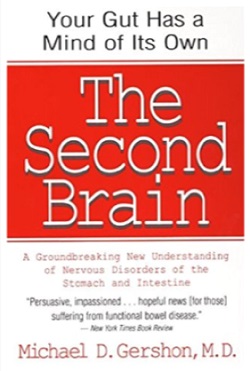
One of the most interesting aspects of both neurotheology and contemplative neuroscience is the question of the origin of the religious impulse, and the parts of the brain, which influence theistic certainty and alleged communication with a supernatural agent. Religion itself, outside of the contemplative traditions, can often be described as a belief system and series of practices, which enable communication with one or more supernatural agents. Contemplative neuroscience itself almost represents a renegade branch of science although it seeks to conceal its acceptance of an Asian religious agenda at all costs. The integration of Buddhism and science is one of the most interesting aspects of combining secular scientific research with a Buddhist religious agenda. Let us compare the definition of mindfulness with the actual goal of meditation - returning to the enlightened source, or reunion with the original awakened mind. “The awareness that emerges through paying attention on purpose, in the present moment, and nonjudgmentally to the unfolding of experience moment by moment.” -Jon Kabat-Zinn, defining mindfulness Notice that this American definition of Buddhism doesn't really say anything. The reason mindfulness has been accepted by science is that anyone can attribute anything good or positive to it because it lacks any concrete form of explanation or goal orientation. However, the goal of Buddhism is to reunite with the true reality of the original enlightened mind. Meditation is not a journey without a goal based on being aware of the present, and never has been. The goal is to reveal the true identity of the individual as it is concretely and objectively without religious beliefs and superstitions. The question that emerges is whether authentic meditation is ever really secular or scientific in terms of theory, practice and results at least in terms of a current Western scientific understanding of religion, belief and objectivity. From a conservative perspective mindfulness is a religious movement in a scientific guise based on conversion and evangelism and many young scientists have been successfully converted. The prospect of a global institutionalized corporate scientific Asian religion based on compliance, surveillance and meditation is actually in process. From a conservative perspective, the far left Buddhist meditation establishment has spent decades working on this counterculture agenda, which changed from overthrowing the government to converting everyone to Buddhism secretly by getting them to meditate. Once you get meditation into schools, workplaces, jails and the military, by not mentioning Buddhist enlightenment, you have successfully tricked America into accepting a Buddhist Trojan horse without considering the consequences. You have succeeded in putting LSD into the water supply, but the LSD has been replaced by Buddhist meditation. This whole situation is extremely entertaining from a progressive liberal perspective. From a hard science cold war military perspective Western civilization has been successfully attacked and defeated from within by an Asian religion and is now currently in the position of the Roman Empire confronting the radical popularity of Jesus. Proof of this is that the military is now meditating. This means the US government is now doing exactly what Buddha said to do to discover the true self. (Perhaps I should say non-self.) 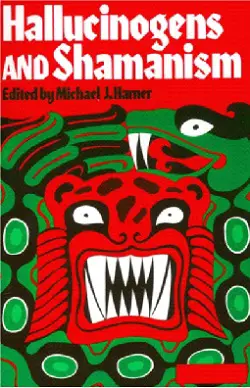
Essentially we are in a war of worldviews based on a transition from 19th century mechanism to 21st century neuroplasticity in which formless thought shapes the brain and its functioning process as much as its neuronal firing determines our thoughts about who we really are. Neuroscience has demonstrated that two months of concentrated thought has the ability to physically change and restructure the brain for the better. This would logically apply to daily medical hypnosis/self-hypnosis so consciousness, and the placebo effect may be much more than simply the product of brain function. This is a scientific validation of mind over matter and changes our definition of the brain as a fixed mechanical structure. Describing all mysticism and religious experience as the meaningless product of altered brain function and chemical imbalance is the hallmark of neurotheistic skepticism. The question often boils down to whether consciousness can exist independently of the brain. The problem here is that most skeptical neurological views of religious experience do not distinguish between the contemplative traditions, which emphasize the literal personal experience of the liberation of consciousness without a supernatural creator, and all the other varieties of religious belief, which revolve around communication with supernatural agents. Science as a whole rejects the idea of one or more supernatural agents, although modern descriptions of invisible diseases are in some ways remarkably similar to premodern descriptions of plague transmission within non-Western cultures. The progression of the Western love of Native American spiritual beliefs from its origins described in Michael Harner's book, Hallucinogens and Shamanism to the sonic driving (drumming) of modern New Age shamanism, mirrors the progression of transpersonal psychology from LSD therapy to holotropic breathing to mindfulness and Herbert Benson's relaxation response. As the anthropologist, Michael Harner once told me, “The closest thing to demons are disease spirits.” Harner is one of four prominent anthropologists who acknowledge the spirit world of shamanic cultures and believe that shamans regularly actually do communicate with supernatural agents/spirits. Mircea Eliade, Michael Harner and Carlos Castaneda almost single handedly created the modern neo-Shamanic movement. Many Native Americans despise the word shamanism and believe that it is one of the worst New Age examples of cultural appropriation, perennialist distortion, and colonialism. Dozens of unconnected aboriginal tribes believe that the human soul can be found in the abdomen. David Shenk's, The Genius in All of Us, does a good job of showing that many of our most cherished nature versus nurture ideas regarding intelligence and creativity are badly outdated. The fact that meditation-based brain development and cognitive enhancement research makes the same claim as David Shenk is a remarkable truth with game changing potential. The reason is that both the origin of religion and enlightenment can be neurologically explained by the consciousness of the second brain according to classical Chinese medical theory. This leads to a significant question for every meditator - is the mind of your second brain already enlightened? Thousands of years of Chinese medical research suggests the answer is yes. Why haven't contemplative neuroscientists heard of this? How can researchers study Asian meditation for decades without noticing this fact?
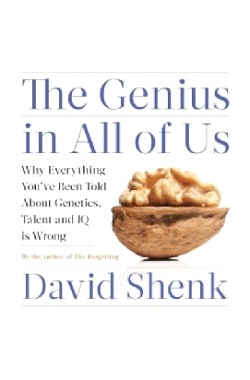
One of the greatest obstacles to creating a neuroscientific model of the enlightened brain can be traced back to the horrible political conflict between China and Tibet, which is distinctly based on atheism versus religion. Science as a whole prizes an atheist perspective, which seeks to explain physical and mental phenomena without resorting to supernatural agency. The fact that Tibetan monks felt compassion for their torturers is often sited as proof of meditation induced higher personality integration by the neurocontemplative establishment, which dominates and controls meditation research. The problem here is one of objectivity and accuracy. Science is supposed to be far more objective and truthful than religion in terms of its description of reality and its explanation of phenomena. Contemplative neuroscience has to avoid discussing spiritual awakening to maintain its legitimacy and objectivity, but the idea is that the meditators with the most meditation hours (10-50,000 hours) are like elite athletes or Special Forces soldiers that have trained their brains to incredible states of stabilized higher personality traits and cognitive enhancement. The question here is does 50,000 hours of meditation really result in objectivity and higher truth? Would you feel comfortable telling your children that a lifetime of meditation and sitting with your eyes closed chanting in Asian robes with a shaved head is a realistic life? Is Matthieu Ricard really the happiest man in the world? Of course mindfulness tells us to avoid making dualistic judgments, which remove us from the radical objectivity of the present moment. Enlightenment has to be considered a realistic goal for any of the scientists to even bother researching the results of highly advanced states of meditation. Yet they don't disclose this openly. The fact is that the neurocontemplative establishment avoids revealing or discussing at all costs that many of the monks with the most amount of meditation hours usually believe homosexuals are going to hell as is repeatedly written in many of the Buddhist scriptures, some babies are reincarnated meditators identified as incarnations of previous famous lamas, and people turn into light and can fly when they achieve enlightenment. The reality appears to be that individuals who meditate the most are often the most superstitious and least enlightened from a scientific perspective. So how does this apply to Western meditators and their ability to remain objective scientists when the Olympic athletes of meditation are completely delusional from a scientific perspective? It appears that there may be a basic conflict between science, authentic spirituality and religion that needs to be solved by contemplative neuroscience, which has to choose whether it can really study meditation without explaining or discussing enlightenment. From a progressive 21st century perspective, religion is bad, spirituality is good, and science is good. This is why the contemplative neuroscientists are comfortable saying I'm not religious but I'm spiritual. Avoiding the inevitable confrontation with the reality of Buddhahood as the essence of human consciousness is not conducive to the progress of neurocontemplative science. 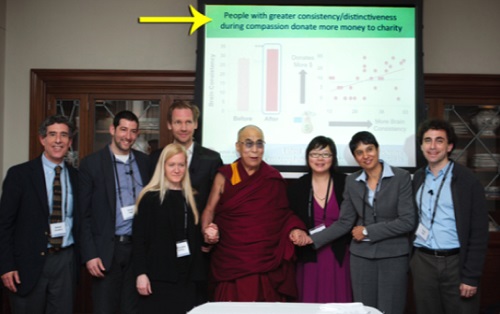
Yellow arrow points to: “People with greater consistency/distinctiveness during compassion donate more money to charity.”
What is interesting here is that a Buddhist counterculture movement within science based on religious conversion has emerged successfully within neuroscience. For science to still be science it must avoid guru territory at all costs. Guru territory is where the non-believer transitions into a believer. It should also be noted that the essence of Tibetan Buddhism is the practice of guru yoga. When you look at a picture of Richard Davidson and David Vago with the Dalai Lama he is their guru, not their fellow scientist and researcher. When the New York Times reviewed The Genius in All of Us, the reviewer said, “He is almost entering guru territory here.” Guru territory is the dark zone where scientific rationalism is abandoned for religious neuroses and superstitious belief. At this point contemplative neuroscience has joined many New Age movements in creating a system of double speak, which conceals the process of indoctrination and the real agenda of the cult. Many of the aspects of the romanticism, which characterizes the scientific acceptance of mindfulness or spiritual practices and beliefs are based on the successful marketing of this corporate double speak, which has been the basis of much political and religious propaganda for over a century. There is a major problem in the credibility of science when the goal of meditation is enlightenment but contemplative neuroscience cannot discuss it because it sounds too much like God. However Zen doesn't describe the enlightened original mind of each human being as an invisible creator, or higher power. The goal of this article is to explain the brain's belief in God as the ongoing memory of the second brain, which contains an ancient structure of enlightened consciousness, which Zen calls the Original Face/Embryo of Buddhahood. Although the neurocontemplative double speak may be well intentioned it is not science and it is not truthful. The commercial marketing of Buddhism by publishers, advertisers and meditation teachers has resulted in mixing the Asian concept of permanent escape from slavery, mind control and amnesia with white middle class definitions of happiness, which in America at least are usually wealth and celebrity status. Instead of think (meditate) and become enlightened by “returning to the source”, we end up with think and grow rich, the standard New Age prosperity message, which tells us that poverty is the result of pessimism and is the basis of much American religious belief. But contemplative neuroscience has learned from its counterculture roots in psychedelic science. In the same way that LSD therapy turned into holotropic breathing, Asian spirituality has been turned into meditation-based brain fitness. As Roland Griffiths, the psilocybin researcher that recently successfully recreated Walter Pahnke's 1962 Good Friday Experiment said, “There is a big difference between a spiritual experience and a spiritual life.” Additionally, because the Judeo-Christian model of science rejects spiritual awakening/enlightenment, the Chinese and Indian medical explanations of enlightenment as the goal of meditation/yoga cannot be fairly and openly considered. The theistic versus non-theistic models of mysticism also confuse the issues of meditation, religious experience, authentic spirituality and the role of science in understanding them. 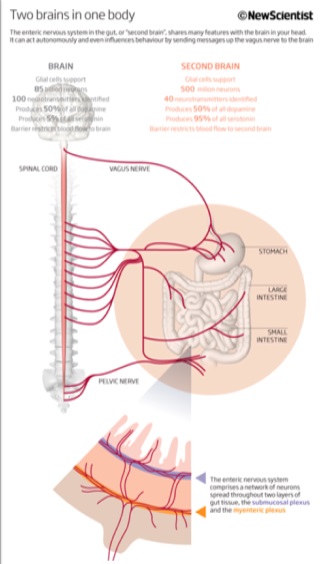
The vagus nerve connects the brain with the enteric nervous system.
Many non-Buddhists define the goal of meditation as the realization of God, which is considered to be complete delusion within all three major branches of Buddhism. The concept of the higher power, a description of a master servant relationship, much like a guru and disciple, is so powerful from a psychological perspective that all spirituality is believed to be based on this striking inferiority complex. A refreshing alternative is when the Self is recognized as identical to Brahman when the illusion of Maya is removed from the mind of the meditator. It is not that there is a God part of the brain. Contemplative neuroscience has demonstrated that there is not one place in the brain that is responsible for all religious belief and experience. It is not that the enteric nervous system is a 500 million neuron second brain in the gut that is responsible for 95% of the serotonin and 50% of the dopamine in your body. The brain in your skull is actually the second brain! The consciousness of the one in your gut is your true self, the original enlightened mind, according to Zen meditation theory, which has a Taoist origin. The first brain is the one that is literally created first in terms of embryonic development, the brain in your gut. It is the enlightened mind or consciousness of the gut brain, which travels up the vagus nerve to the skull brain, which results in Buddhahood or awakening. Ninety percent of the information carried by the vagus nerve goes from south to north, gut brain to skull brain. The fundamental truth revealed by the goal of meditation is also true from a non-theistic neuroscientific perspective. There are neurons in the human brain, heart, and gut, and when they are successfully fired off simultaneously using meditation/inner yoga the individual has the potential to become psychologically and neurologically whole. As is often repeated neurons that fire together wire together. So while keeping its Taoist meditation origins in mind, the basic theory of Zen meditation is correct both physiologically and psychologically. Enlightenment means the mind has reunited with the source of itself. Every human being does have an enlightened original mind, which is the consciousness of the primordial brain in the gut. This is remarkably similar to a kundalini model of yoga and consciousness evolution as well although the starting point is placed at the base of the spine instead of the navel. There is some debate as to whether the central channel is the spine or the vagus nerve and it may very well be both. The enteric nervous system and the central nervous system both evolve from the neural crest during embryonic development. 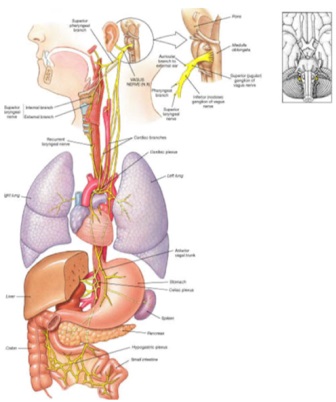
The vagus nerve has been called the “Buddha Nerve” because of its effect on the mind and body during meditation.
The most important idea in Chinese meditation/inner yoga is the idea of uniting the pre-birth enteric consciousness, which is considered to be yang, with the post-birth consciousness of the central nervous system, which is considered to be yin. The process emphasizes the use of embryonic breathing, the pre-birth breathing pattern, which is the basis of creating the neurological union of pre-birth and post-birth structures of consciousness, which is described as the recreation of conception within the body. The mind has been fully reversed and united with the literal first thought, which is the transition from non-being to being, or emptiness to form. Buddhist meditation describes this process as returning the Dharmakaya/Tathagatagarbha to void. The traditional goal of Chinese meditation/inner yoga describes this physiological process using the shamanic alchemical terminology of the marriage of the dragon and tiger. 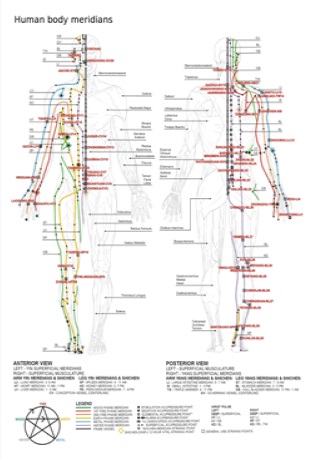
Chinese medicine defines enlightenment as the complete opening of the body's energy meridians when pre-birth and post-birth consciousness is fully united through meditation/inner yoga.
The dragon is the yang consciousness of the enteric nervous system and the tiger is the yin consciousness of the central nervous system. This is the classical metaphor for the fundamental experience of the Chinese philosopher/sage, which underlies every aspect of East Asian civilization as well as the yin yang symbol of Taoism itself. The meditation goal of “returning to the source” is the union of the pre-birth mind with the post-birth mind and has a solid neurological basis. This is an experience, which has been experimentally repeated successfully within the bodies of thousands of meditators for thousands of years. Since the goal of contemplative neuroscience is to understand how to heal the mind by rendering the brain whole (or vice versa based on neuroplasticity), the incomplete understanding of the goal of meditation prevents much of the healing potential of chi kung/meditation from being understood from a Chinese medical perspective. Tibetan Buddhist lamas routinely describe the highest level of healing as enlightenment. Contemplative neuroscience is unable to agree because of its current secular position. Many Western meditation teachers are completely unaware of the potential for whole body healing that medical chi kung/meditation represents. Mindfulness research always makes a point of insisting that meditation cannot heal the body. The last 2000 years of Chinese and Indo-Tibetan medical theory suggests just the opposite. The worst aspect of the confusion that often characterizes contemplative neuroscience and alleged secular Buddhism is that the hallmark of an incomplete scientific model of healing is the nocebo effect. The nocebo effect is a reverse placebo effect. So when a doctor tells you that after two years the symptoms of your head injury are permanent and will never get better this is the nocebo effect in action as essentially a modern medical curse. 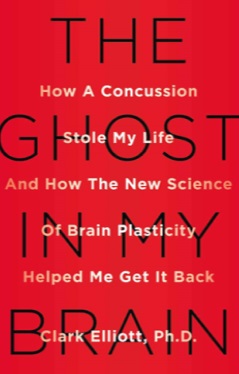
The recent book, The Ghost in My Brain, illustrates this well because the author recovered after 8 years of rejecting multiple nocebo verdicts from multiple doctors. So when you tell the public that the goal of meditation is mindfulness, as opposed to enlightenment you have become the embodiment of the nocebo effect in action. The actual Tibetan belief is that the antithesis of healing is anything that prevents you from achieving enlightenment. Tibetans go so far as to say that the Buddha's worst enemy was his father who wanted him to be king instead of achieving enlightenment, which Buddha found to be much more valuable than royalty, wealth and status. The nocebo effect is closely linked with skepticism, pessimism, and cynicism and often remains unrecognized by mainstream culture and science. It appears that in many cases skepticism is based on rejecting the premodern science of non-Western mind/body systems of consciousness evolution. The scientist that rejects God has to reject Buddhahood as well because he/she must assume that Buddhahood is a fictitious agent, which has been rejected by legitimate scientific inquiry. Contemplative neuroscience doesn't do this, but it switches the word enlightenment to happiness or well-being, which is a Western middle class concept usually based on profit and status, which dramatically differs from the actual goal of meditation. Most importantly in terms of functional healing associated with meditation, chi kung and yoga there is a clear Chinese medical model, which has no problem explaining enlightenment/awakening and the physiological healing of the body, brain and mind accurately. Because of the Chinese oppression of Tibet, the medical chi kung model of enlightenment has not been successfully translated, and does not appear to be under serious consideration by contemplative neuroscience even though it has successfully excluded religious beliefs. Additionally, the Buddhist monks that have been studied do not appear capable of explaining enlightenment or there would be a valid neuroscientific explanation of the Buddha nature/Embryo of Buddhahood by this time. Any competent Chinese meditation teacher that reaches the completion stage of meditation describes the same neurophysiological narrative. The goal of meditation is to conjoin the yang consciousness of the gut brain, which is already enlightened with the yin consciousness of the skull brain. From a Chinese medical perspective the body can often heal itself as well as the brain and mind simply and naturally by returning to a pre-birth embryonic breathing pattern. This pattern may be similar to that of the deepest stage of sleep when the body rejuvenates, heals and energizes itself. The pre-birth consciousness of the gut brain is yang and enlightened. When fused with the yin post-birth consciousness of the skull brain the human being wakes up as a sage that has successfully reunited with the original enlightened mind, which is always already the way things have been and the way things really are. This is the essence of ancient Chinese philosophy/inner science in which the individual returns to the enlightened source through meditation. This process can also be achieved through sexual yoga as in the Indo-Tibetan Mahamudra tradition, which many scholars have noted is remarkably similar to Southern Taoism. This tradition describes the union of yin and yang structures of consciousness as the union of mother and son lights. The enteric nervous system is described as female as opposed to male in this version of the inner alchemical yogic union, which is the goal of many Asian meditation traditions. This Freudian incest metaphor can be found within Taoist, Buddhist, and Hermetic inner yoga/alchemical traditions. It has been used by the Chinese communist party to justify the brutal oppression of Tibetan religious practitioners.
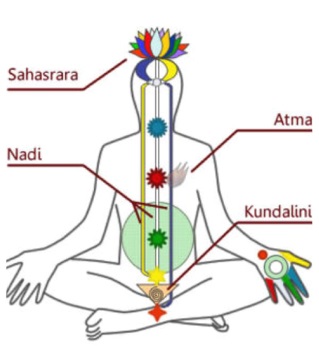
Indian yoga often describes the kundalini as the genius within man.
The conclusion here is that Western civilization suffers from a divided or split brain/personality neurosis that goes far beyond the discovery of the unconscious, to the division of the neural crest into the enteric and central nervous systems during embryonic development. Western popular culture remained largely unaware of the existence and importance of the second brain until the 1998 publishing of the book, The Second Brain, by Michael D. Gershon, M.D. Gershon says that the second brain cannot be separated from hearing and seeing, and plays a major role in terms of mood, health and feeling. There are also a number of theories that Alzheimer's, Parkinson's and other serious brain diseases may begin in the gut. Autopsies regularly reveal the same lesions in the neuronal tissue in the gut, as exist in the brains of the individual's whose memories and brain function have been destroyed by these diseases. Many scientists say that the skull brain is completely dependent on the energy produced by the gut brain for successful mind, brain, and bodily health regulation. Gershon describes a future in which psychiatrists treat the second brain. Imagine a future in which every psychiatrist knows the brain in your skull is the second brain and the mind of the brain in your gut is the enlightened genius within all of us. This is a striking model of 21st century meditation-based human potential that appears to be accurate. The concept of God from an accurate neurocontemplative perspective may be largely based on the second brain's mind remembering and longing for union with the consciousness of the first. This would explain the goal of Christian mysticism, which is often described as union with God or the Ground of Being. Nor does this model disprove the actual existence of God. But overall this is a much better working model of contemplative religious experience and the goal of meditation than the current explanations of most Western meditation teachers and neurocontemplative researchers. What is even more remarkable is that European premodern science was secretly aware of this situation 500 years ago. Christian mysticism is accurate in the sense that the human being is actually composed of body, soul and spirit. Spiritus was the consciousness of the gut brain. Anima was the consciousness of the skull brain. Spiritus and anima were united within the corpus or body using sexual yoga within the Hermetic tradition. This resulted in the alchemical marriage, the conjunction of opposites that produced the non-dual illuminated mind of the natural philosopher that had completed the great work of uniting the microcosm with the macrocosm, which describes a neurological return to the enlightened source. As David Shenk points out repeatedly in his book, The Genius in All of Us, intelligence is an ongoing process that is determined by training and effort far more than talent and genetics. Didn't Freud say meditation was catatonic regression based on embryonic nostalgia?
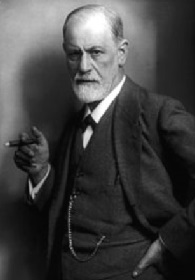
“If I had it all to do over again I would focus on studying the occult.”
–Sigmund Freud, 65 years old |